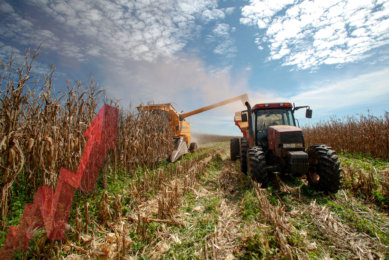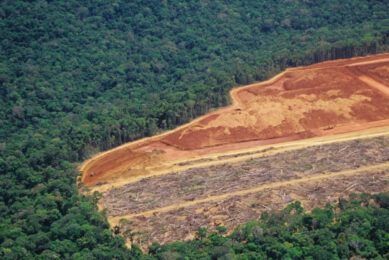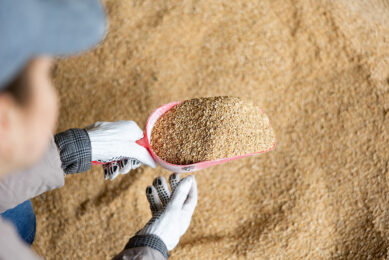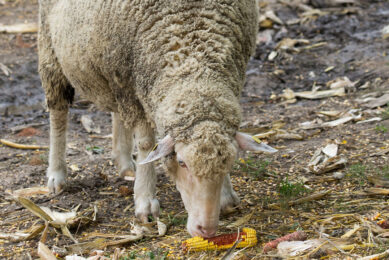CP Cambodia aims for growth in 2008
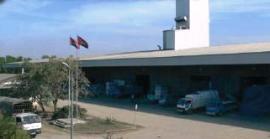
Charoen Pokphand Cambodia plans to expand both feed and animal production in anticipation of greater economic growth in the country. “Now is the right time to grow,” according to Sakol Cheewakoset. By Apisit Buranakanonda
last few years. Tight supplies of raw materials have driven feed prices up more
than 20% compared with last year and bird flu in 2004 swept away many small
hatcheries supplying broiler and day-old layer chicks. To be able to have a
successful feed market and to re-establish trust and credibility it is important
that we as CP Cambodia expand and help to modernise the local livestock
industry, says Sakol Cheewakoset, senior vice-president in charge of overseeing
the Cambodia and Laos operations of Charoen Pokphand (CP).
The company’s production accounts for 60% of the feed sold in Cambodia. Feed is
distributed via more than 40 distributors in the major animal production areas
Kandal, Kampong Spue, Kampong Cham, Siem Reap and Battambang. Although labour is
relatively cheap, Cambodia has up to 15% higher production costs due to more
costly transportation and import taxes. Electricity alone is 20 to 30% more
expensive than in Thailand. In recent years, infrastructure has been improving
though.
Raw materials such
as corn, soybean, cassava and fish meal are available locally. December is the
busiest time for procuring raw materials and checking the quality of feedstuffs.
Coarse grains are tested for adulterants, contaminants, appearance, physical
quality, moisture content and more. Some 30% of raw materials are subject to
primary testing before acceptance. Once accepted, the quality control team takes
100% samples of all intake materials. For protein sources, it is using dried
freshwater fish from Tonle Sap lake, fishmeal from Kampong Som and oil from the
fish processing industry.
overcooked. Raw materials and cooked products are physically separated.
Producers can choose concentrate, mash or pellet feed. Pellets are slightly more
expensive than mash and the market is shifting more towards pelleted feed due to
better growth performance.
Competition
production for domestic use and limited exports. However, local producers still
face fierce competition from imports from Thailand and Vietnam. Vietnamese
products lately have been enjoying cost advantages over their Thai competitors
because the Thai baht has risen faster against the US dollar than the Vietnamese
dong. Also, Vietnamese feed is packed in 25 kg bags, making it seem cheaper at
first glance than the standard 30 kg bags coming from Thailand.
On the production front, the feed industry sees
competition from the cassava processing industry in Cambodia and traders from
Korea, Thailand and China, all of whom are vying for corn and cassava. This has
driven prices up more than 50% compared with early 2007, resulting in a big
windfall for Cambodian farmers. It is estimated that some 60% of raw materials
produced are destined for Thailand.
CP Cambodia’s sales
strategy is based on the premise that providing top breeds, proven technology
and management, and good feed performance will improve the competitive position
of the producers who buy its products. With modern technology, genetics and top
quality feed, a producer can reduce finishing time for their pigs by two weeks
or more, Cheewakoset said. The poultry breeding operation of CP Cambodia is
doing well and will be expanded further in 2008 to accommodate heavy demand. The
company plans to raise its annual output of broiler chicks to three million
birds this year, up from 2.2 million in 2007. It will also increase production
of up to 120,000 finishing piglets in 2008. Quality assurance and feed quality
is on par with CP’s feed in Thailand.
Formulas are prepared on site under the direction of the parent
company in Thailand. Its phase feeding program consists of
pre-starter, starter, grower and finisher feed. Retained samples are kept for
one month to aid trace back. CP Feed is marketed under the Hi-Gro, CP, and Hog
brands. The company is also looking at developing markets for aqua feed. The
coming year, CP Cambodia wants to increase its feed production from 10,000 to
15,000 tonnes/month, of which 70% will be complete feed and 30% concentrate. In
addition, the company will explore potential locations for a new feed mill,
either near Suang on the Vietnamese border or near the major corn growing area
in Kampong Cham. The last major goal for the company is to pursue the “Kitchen
of the World” strategy by investing in a further cooked plant capable of
producing over 500 kg/day of sausages and meatballs in Phnom Penh.




